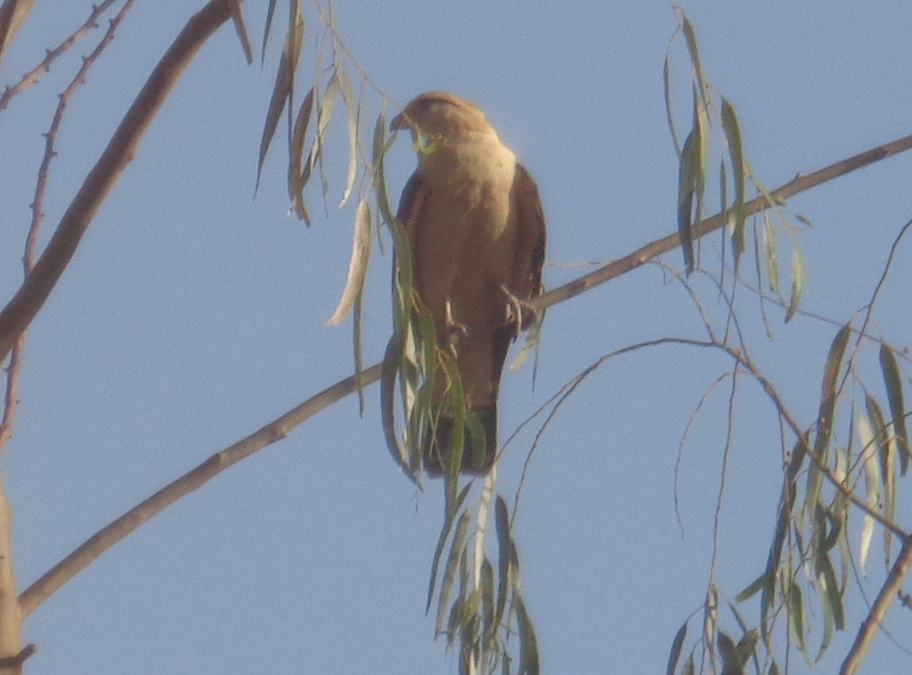Caracaras are birds of prey found throughout the Americas. They are related to the falcons. There are a number of species of cacacara each with their own home ranges. In their various forms they can be found from the bottom of Argentina right up to the southern states of the USA.
The member of the family most commonly found in Paraguay is the Yellow Headed Carara. Milvago Chimachima. This is a bird of the tropics and sub tropics which is common throughout its range. That range stretches from Costa Rica right down to Northern Argenina.
In comparison with other cacacaras the Yellow Headed Caracara is not particularly large. However at about 50cm in length it is still a substantial bird.
The Yellow Headed Caracara is easily identifiable. It has brown or black wings and a creme coloured body and head. On its head running back from the eyes there is a clear dark stripe.
The wings a broad and fairly short. When in flight a white patch on the underside of the wing is displayed. It has a long tail which gives the bird a balanced look.
Originally the Yellow Headed Caracara was a bird of the forests. However when those are cleared and land opened up for agriculture it adapts with ease to living in open grasslands. From there it has little difficulty moving on to more populated areas and has become quite at home in urban environments.
This adaptability has made the Yellow Headed Caracara after the Black Vulture the second most common bird of prey in Paraguay. It is common across Paraguay and under threat nowhere within the country.
Even if in seen a bird has little trouble in making its presence known. The call of the Yellow Headed Caracara is a loud one audible at considerable distances. Its distinctive call takes the form of a screamed schree sound repeated over and over again. It is a sound I can hear most days out in the garden.
Another feature that helps the bird thrive in addition to its easy adaptability to changing habitats is its diets. The Yellow Headed Caracara is not a picky eater. Its diet is omnivorous and it seems happy to feed on almost anything that comes its way.
The majority of its diet is carrion for it is primarily a scavenger not a hunter. Any dead animal is acceptable. From rabbit to crocodile and everything in between. Birds may often be seen by roadsides looking for or feeding upon road kill.
Some live prey is taken. This tends though to be restricted to small reptiles and amphibians. Furthermore they will occasionally take fruits such as those of palm trees. At times young chicks are fed on a diet of fruit rather than meat.
In a field of cattle it is not unusual to see birds riding upon the backs of cattle. The cows must have thick hides for they generally appear completely untroubled despite the birds having large and sharp talons. What these birds are feeding on is any ticks that the cattle may be carrying.
Although the birds do perch in trees to look for prey they do not dive upon it in the way that a hawk would do. Being scavengers rather than active hunters birds will instead land near a carcass and then walk across the open ground towards their meal.
All these features have made it a very successful and adaptable bird throughout its range. One that I can be certain of seeing every day either whilst in my garden or whenever I head out.


Recent Comments